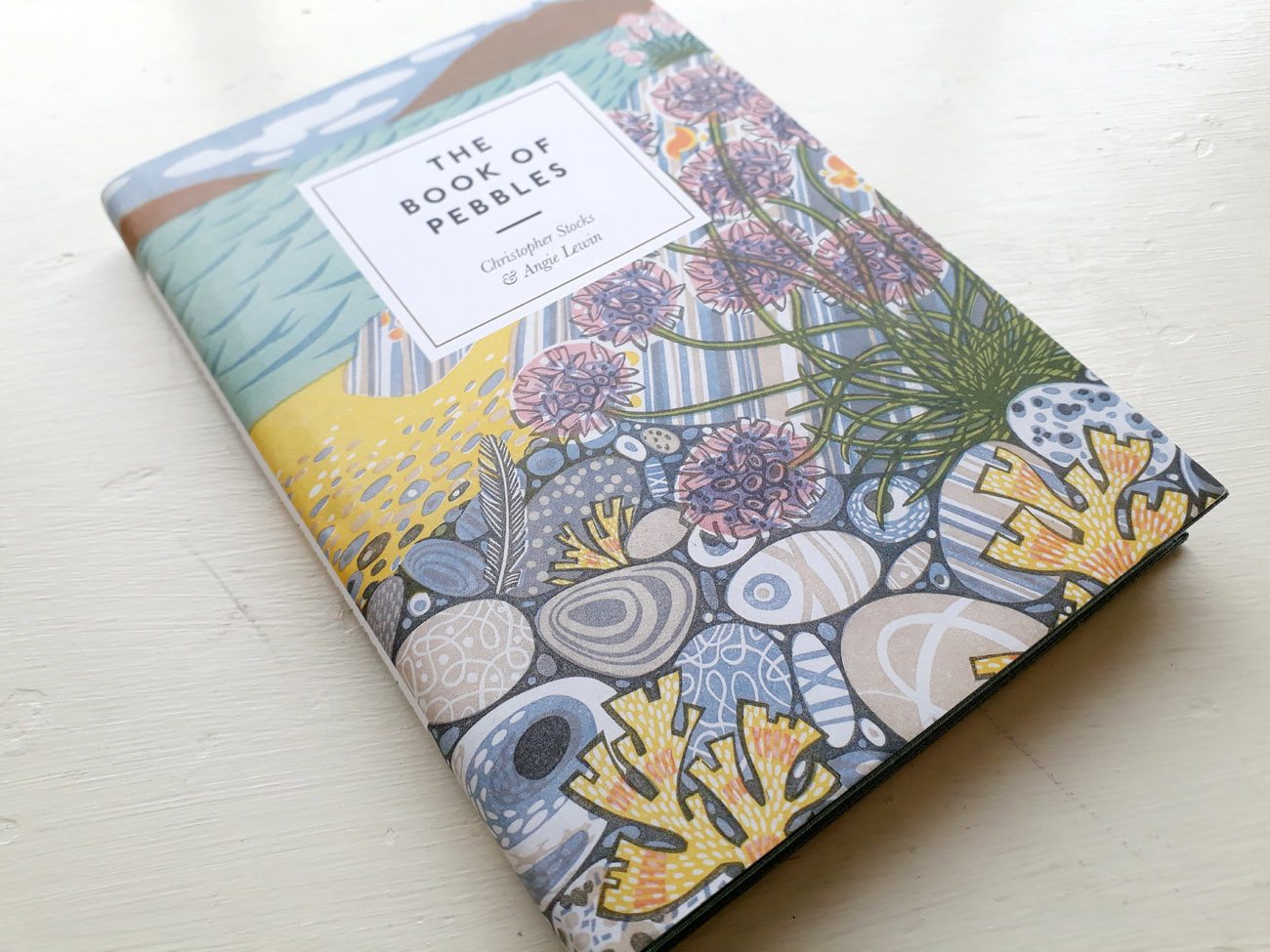The Book of Pebbles – Book Review
Written by Christopher Stocks / Illustrated by Angie Lewin
Published by St Judes
There’s a jar of pebbles on my mum’s bathroom windowsill, collected by me as a child, that confirms the longevity appeal of these small seaside stones (in my family at least). I always loved the smooth shapes and soft colours, but at that age it didn’t occur to me to draw them. The Book of Pebbles makes me wonder why not, as Angie Lewin’s artwork places these simple forms at the forefront of her images, creating beautiful compositions in watercolour, prints and engravings.
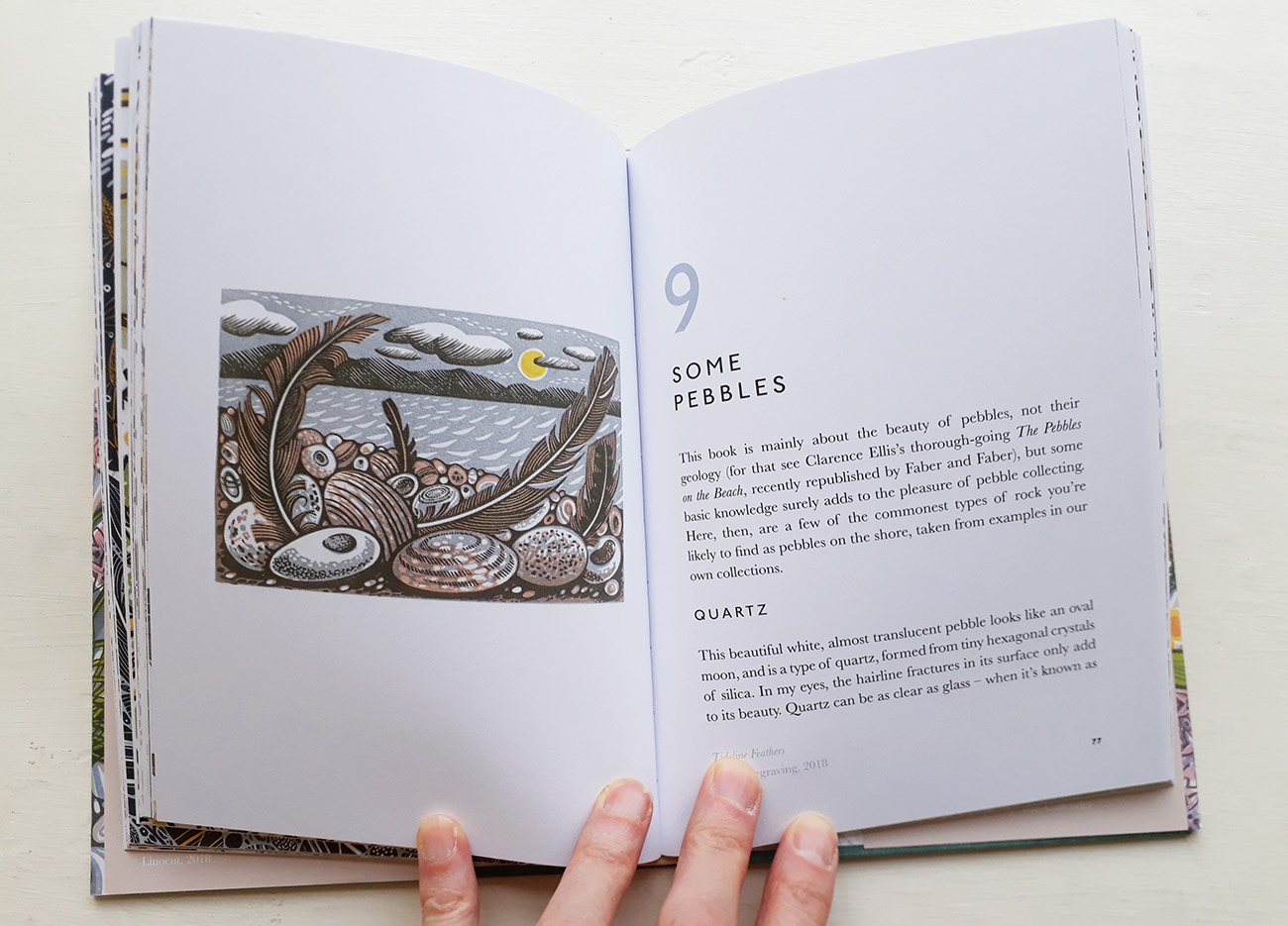
She favours a still-life, or close up of stones, seaweed or flowers and gasses with a distant land or seascape to place the objects in an environment, in well-judged colour palettes. Emphasising the patterns, some of the pebble images become almost abstract. You may be familiar with her work from cards and prints.
Many of the artworks distributed throughout the book are intricate, but several of Lewin’s linocuts in two colours capture the variation in appearance and texture which make just a few pebbles together so aesthetically appealing.
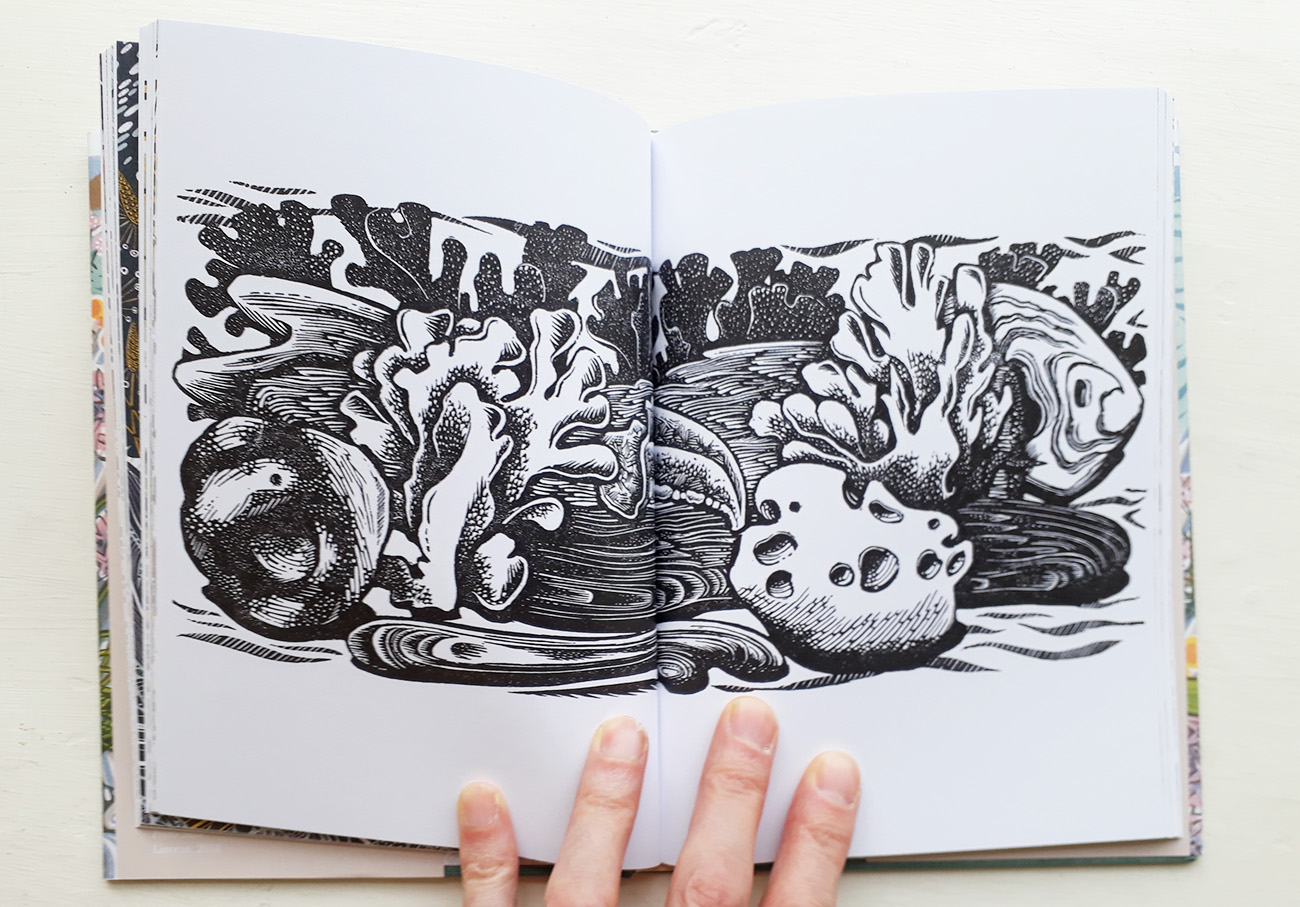
The text by Christopher Stocks takes the reader on a many faceted guide to pebbles, from the crash of pebbles in continuous formation on Chesil Beach, via the love many artists have for these little stones’ form, to his own geological queries. A list of pebble materials include quartz, limestone, brick and glass, sandstone and the less familiar schist and gneiss. It’s descriptive writing, capturing texture and colour alongside stories and personal thoughts on these most basic of objects. As for what a pebble, is Stocks tells us ‘…there is no universally accepted definition of what constitutes a pebble rather than, say, a boulder or rock.’ But he amusingly points out that there’s one thing that unites all (sea tossed) pebbles, ‘none of them are getting any bigger’.
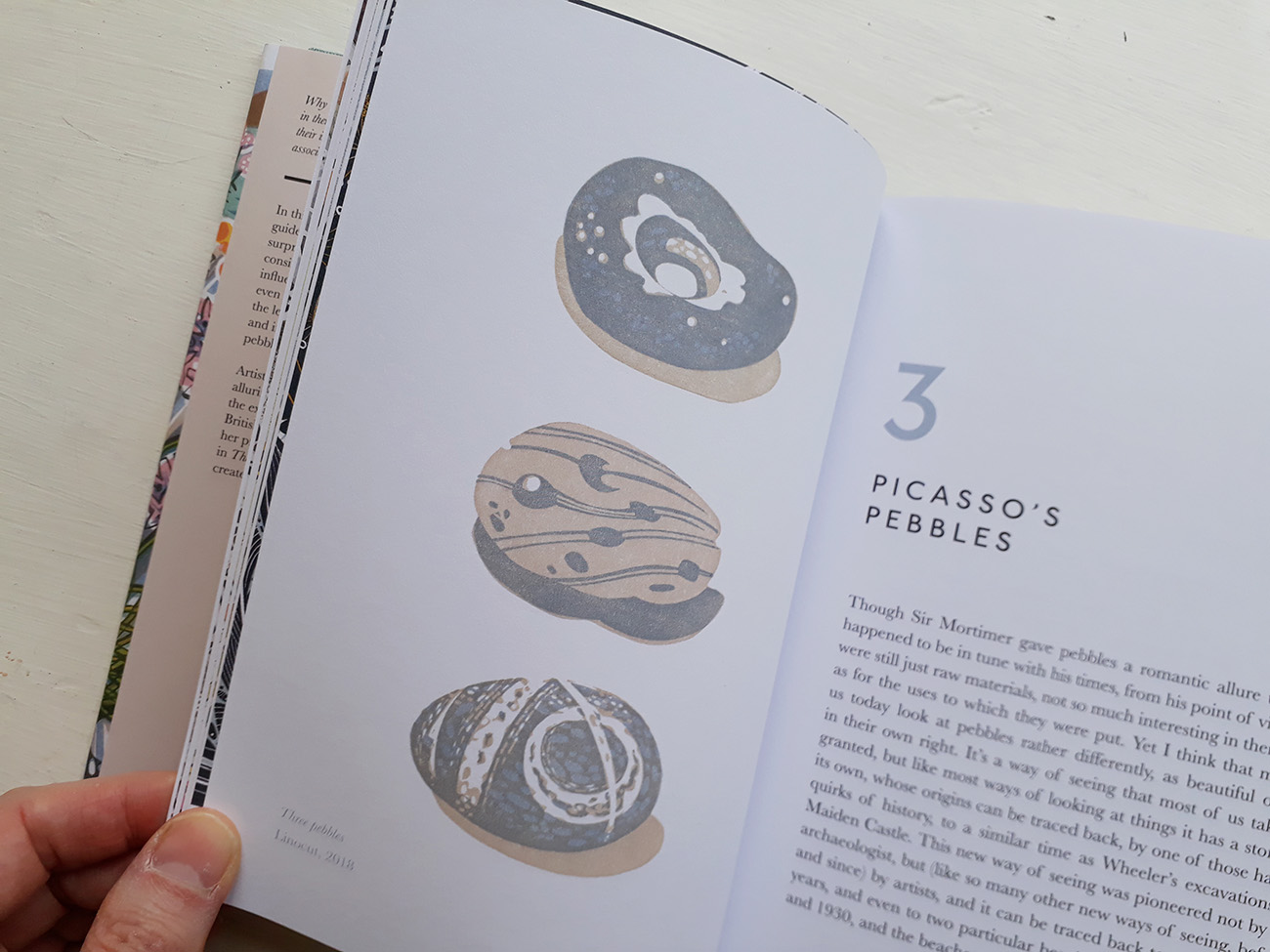
For readers aiming to get out there collecting, there’s a chapter entitled ‘Some Beaches’ which describes ‘our personal favourites’, including Blakely Point, a beach Lewin returns to draw every year.
A small wood engraving from the mid-90s ends the book – a contoured pebble resting on a bed of seaweed. A contemplative ending to a publication which engages and delights the eye and the mind.
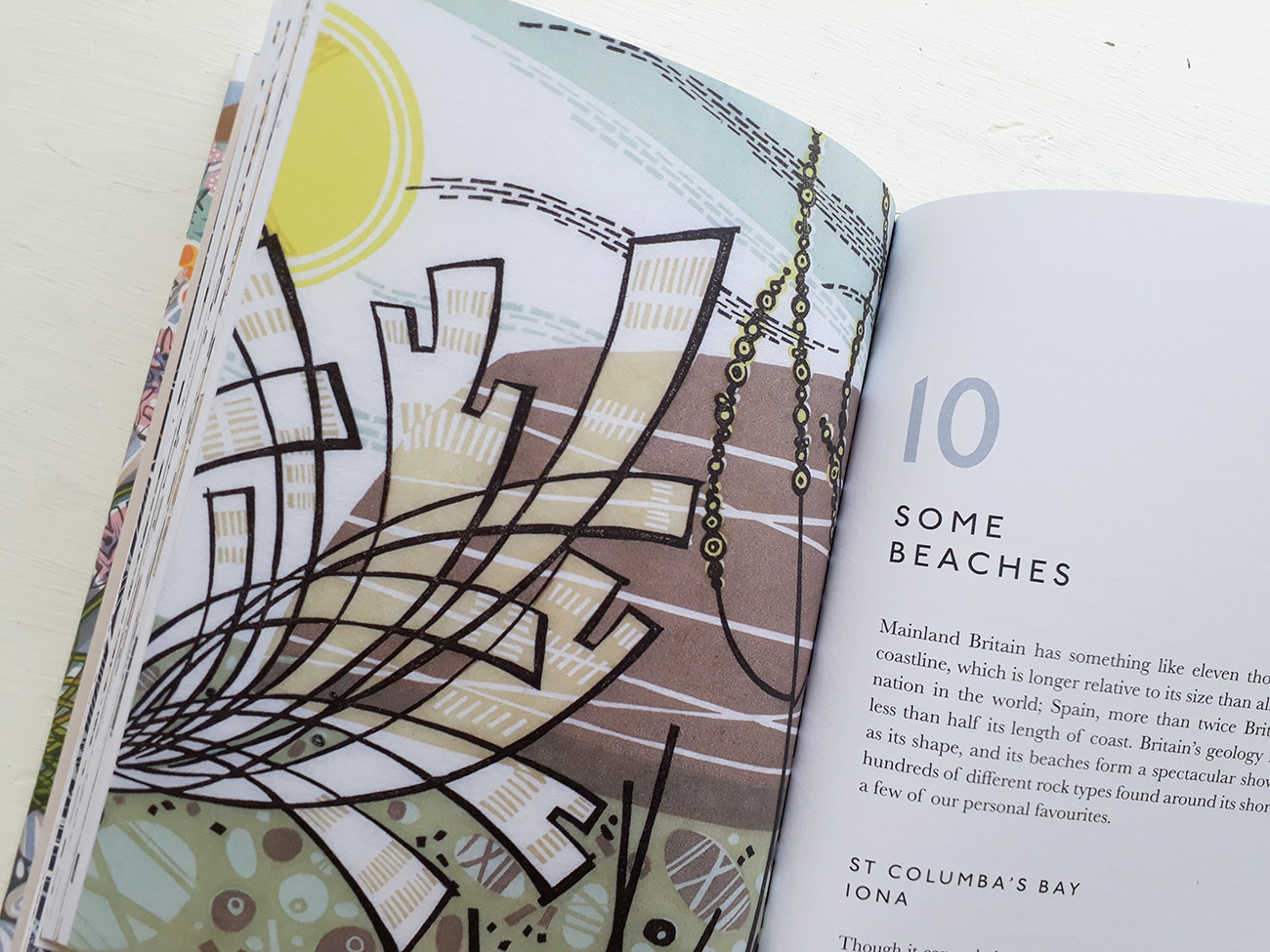
Back to News Page

